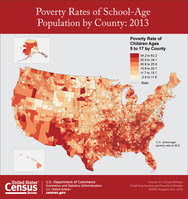Revenue increased in all of the nation’s 11 service sectors for employer firms, according to http://www.census.gov/services/index.html 2013 Service Annual Survey statistics released this month by the U.S. Census Bureau. Within the utilities sector, natural gas distribution showed a revenue increase of 15.7 percent, from $82.2 billion in 2012 to $95.1 billion in 2013.
The Service Annual Survey provides the most comprehensive national statistics available each year on service industry activity in the U.S. In 2009, the survey expanded to include data for all service industries, which account for approximately 55 percent of the U.S. gross domestic product.
Highlights from service sectors:
Utilities
• Private sector utility revenue for 2013 was $541.0 billion, up 5.6 percent from $512.1 billion in 2012.
Transportation and Warehousing
• Revenue for transportation and warehousing for 2013 was $815.8 billion, up 4.1 percent from $783.9 billion in 2012.
• Pipeline transportation showed $36.5 billion in revenue for 2013, up 5.7 percent from $34.6 billion in 2012.
Information
• Information sector revenue for 2013 was $1.3 trillion, up 3.4 percent from 2012.
• Within the sector, the revenue for software publishers for 2013 was $172.3 billion, up 6.8 percent from $161.3 billion in 2012.
• In 2013, the revenue for wireless telecommunication carriers (except satellite) was $226.0 billion, up 3.4 percent from $218.5 billion in 2012.
• Data processing, hosting, and related services revenue for 2013 was $95.5 billion, up 6.4 percent from $89.8 billion in 2012.
• Revenue for Internet publishing and broadcasting and Web search portals for 2013 was $62.5 billion, up 10.3 percent from $56.7 billion in 2012.
Finance and Insurance
• Finance and insurance revenue for 2013 was $3.6 trillion, up 2.3 percent from 2012.
• Financial transactions processing, reserve, and clearinghouse activities showed $47.6 billion in revenue for 2013, up 12.2 percent from $42.5 billion in 2012.
• Portfolio management had $206.0 billion in revenue for 2013, up 10.7 percent from $186.0 billion in 2012.
• Investment advice revenue for 2013 was $31.8 billion, up 13.8 percent from $27.9 billion in 2012.
Real Estate and Rental and Leasing
• Real estate and rental and leasing had $497.1 billion in revenue for 2013, up 7.0 percent from $464.6 billion in 2012.
Professional, Scientific, and Technical Services
• Professional, scientific, and technical services revenue for 2013 was $1.5 trillion, up 2.0 percent from 2012.
Administrative and Support and Waste Management and Remediation Services
• Administrative and support and waste management and remediation services had revenue of $745.2 billion for 2013, up 4.0 percent from $716.9 billion in 2012.
Educational Services
• Educational services revenue for 2013 was $56.9 billion, up 3.8 percent from $54.8 billion in 2012.
Health Care and Social Assistance
• Health care and social assistance revenue for 2013 was $2.2 trillion, up 2.7 percent from 2012.
Arts, Entertainment, and Recreation
• The arts, entertainment, and recreation sector had revenue of $222.2 billion for 2013, up 4.7 percent from $212.2 billion in 2012.
Other Services (Except Public Administration)
• Other services (except public administration) revenue for 2013 was $448.2 billion, up 6.0 percent from $422.7 billion in 2012.






